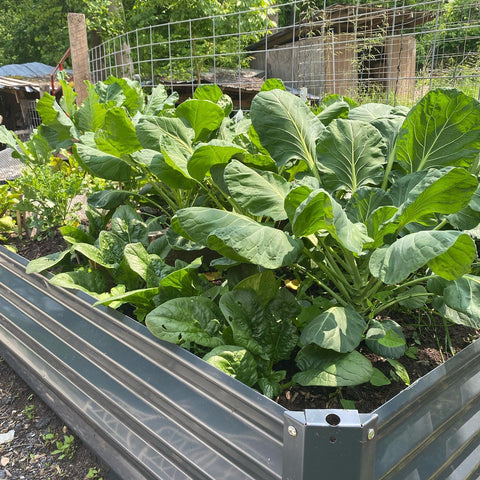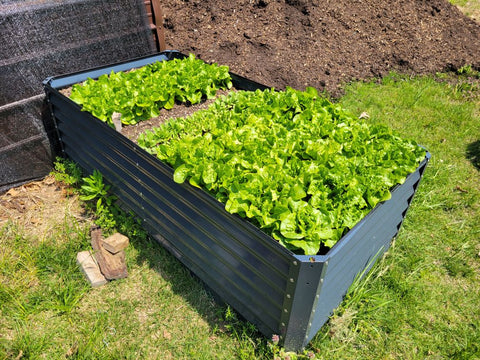Gardening is not just about the visual appeal of your outdoor space; it's also an opportunity to engage your senses. A sensory garden bed, thoughtfully designed with plants that stimulate sight, smell, and touch, can transform your garden into a haven of sensory delight. We'll explore the process and offer tips on how to create a sensory garden bed that's teeming with sensory experiences. Moreover, we'll emphasize the role of garden beds in this endeavor.The following content also has some reference value for raised garden beds.
The Concept of a Sensory Garden Bed
A sensory garden is a carefully planned space designed to engage and delight all five of your senses: sight, smell, touch, taste, and sound. A sensory garden bed primarily focuses on the first three senses – sight, smell, and touch. Let's take a closer look at each:

- Sight: A visual feast is a key element of a sensory garden bed. It involves the use of vibrant colors, contrasting textures, and unique plant shapes to captivate the eye. Whether it's a riot of colorful blooms or the soothing presence of foliage, visual appeal is paramount.
- Smell: Fragrant plants, such as herbs and flowers, fill the air with delightful scents. The goal is to create an atmosphere where different fragrances harmonize and enchant your olfactory senses.
- Touch: The tactile experience is equally vital in a sensory garden bed. Plants with different textures, like soft lambs' ears, smooth leaves, and spiky cacti, are chosen to invite visitors to reach out and feel the diverse surfaces.
The Role of Garden Beds in Sensory Gardens
Garden beds, especially raised ones, provide an excellent framework for creating a sensory garden bed. Here's how they contribute to the success of your sensory garden:
- Enhanced Control: Raised garden beds allow you to have better control over the quality of your garden soil. You can choose or amend the soil mix to suit the specific needs of the plants you want to include.
- Efficient Drainage: With proper construction and soil selection, raised beds can provide superior drainage, ensuring that your plants don't become waterlogged, which can be detrimental to their health.
- Accessibility: The elevated nature of raised garden beds makes them more accessible, making it easier to reach out and interact with the plants. This is particularly important in a sensory garden bed, where touch is a significant focus.

Creating a Sensory Garden Bed: Step by Step
Now, let's delve into the process of creating a sensory garden bed and highlight some tips along the way:
- Select Your Site: Choose a location in your garden that receives ample sunlight and is easily accessible. A sunny spot will encourage flowering plants to thrive and emit their scents.
- Plan Your Design: Consider the layout of your sensory garden bed. Group plants with similar sensory features together to create zones that focus on sight, smell, and touch.
- Choose Your Plants: Select a variety of plants that stimulate your chosen senses. For sight, opt for colorful flowers and foliage. For smell, include fragrant herbs and flowers. For touch, incorporate plants with a range of textures.
- Prepare the Soil: Ensure your soil is fertile and well-draining. If your garden bed is raised, fill it with a quality organic soil mix. If it's in-ground, amend the soil with compost to improve its quality.
- Plant with Care: Pay attention to spacing and arrangement. Allow room for the plants to grow and ensure that each one has enough access to sunlight and air.
- Mulch and Maintain: Apply mulch to conserve moisture, suppress weeds, and maintain a tidy appearance. Regularly prune and deadhead your plants to keep the sensory garden bed looking its best.
- Create Seating: To fully engage with your sensory garden bed, consider adding seating options nearby. This allows you to immerse yourself in the sensory experience.

Conclusion
A sensory garden bed is a delightful addition to any garden. It provides an opportunity to escape into a world of colors, scents, and textures, engaging your senses in a profound way. When you choose to use raised garden beds, in creating your sensory garden, you are taking a step towards ensuring optimal soil conditions and providing easy accessibility for an enhanced sensory experience. So, why not embark on the journey of creating a sensory garden bed that not only appeals to your eyes but also tantalizes your nose and invites your touch? It's a garden adventure that can bring endless joy and fulfillment.









